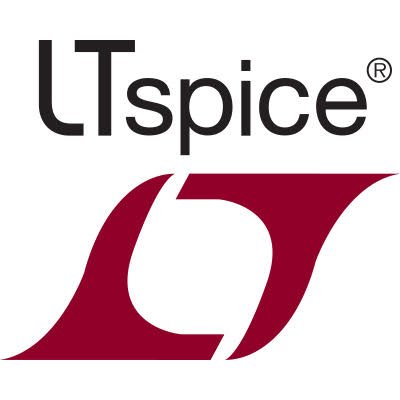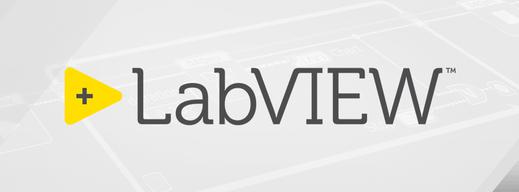Technical engineering software packages for electrical (or electronic) engineers are many and varied, filling a variety of functional needs. The difference among brands that target the same function is largely in the features bundled into the product. Like going to a grocery store, it’s generally a good practice to have an idea in advance of what you really need and what you really don’t. Also, what you or your company can afford. We’re here to help point you to the packages you need.
What Can the Right Software Tools Do for You?
Unlike consumer applications that devour time, engineering software is a tool that exists largely to make your work life easier and save you countless hours (once you learn the software). So, as you search for what you think you’ll need, it’s also best to get some advice on what you actually will need.
The process of doing that as an engineer is somewhat simpler than it sounds. Just think of what sucks up your time when you do electrical engineering work, namely - math, circuit design, test & verification, and documentation. Now, you could search for software solutions for each of these functions, or you could ask working engineers what they think you need, and that’s what we’ve done for you.
What Our Research Suggests You’ll Need
We talked with electrical engineers about the software tools they use the most in their daily work and several popular and proven software packages were consistently mentioned. So, here is our take on some of the best software tools around that you will want to learn and put to use to save you time, improve your design results, and organize your work.

LTspice
SPICE is an acronym for Simulation Program with Integrated Circuit Emphasis. It is a graphic simulation program for circuit design that reduces or eliminates the need for breadboarding or the production of a hardwired board using your circuit design. As circuit designs have grown in complexity, SPICE programs, first released in the 1970’s, have saved countless hours in the design cycle.
LTspice is the market's most widely distributed version of SPICE simulation and is the industry standard. The LT stands for Linear Technology, the company that first developed the product, who was eventually acquired by Analog Devices.
Using the program, you can model an analog or digital circuit, change it, test it, and verify it prior to board manufacture. This allows you to easily visualize circuit response before you actually construct your design. On the job, using LTspice enables these features:
- Transient Analysis for the behavior of a circuit
- AC Analysis for the behavior of a single component in a circuit
- DC Sweep, for circuit performance over a range of parameters
- Noise Analysis for circuit noise reduction
- Monte Carlo Analysis for investigating tolerances of critical components.
Best of all, the program is downloadable at no charge from the current owner, Analog Devices, and runs on both Windows and Mac platforms. Our friends over at CircuitBread.com also have a video tutorial on LT Spice to help you learn it. You can access this at: Getting started with LTspice.

ALTIUM DESIGNER
Altium Designer is currently one of the most powerful and widely used printed circuit board (PCB) design software tools in use worldwide. It offers a design environment that covers the entire PCB design process from schematic, to PCB layout, through harness design, and into final manufacturing documentation.
This professional software solution combines CAD libraries, rules and constraints, bill of materials (BOM), supply chain management, engineering change orders, and other tools into one program. As you might expect, this premium software product is not free and has a comparatively high cost. A free trial of the package, however, is available for evaluation.
Altium Designer runs on both Windows and Mac platforms, and offers these benefits to designers and their employers:
- High-speed PCB design, layout and routing
- 3D CAD capability to visualize component placement and routing
- Ability to design and validate advanced schematics
- Easy schematic capture
- Professional PCB documentation for manufacturing
- Direct access to manufacturer component specifications
- Real-time BOM management and component availability information
As you might expect, software of this capability also has a learning curve, but can offer companies significant savings in time-to-market for their new products.

MATLAB
MATLAB, which stands for matrix laboratory, is a high-level programming language and interactive environment for numerical computation, visualization, and programming. What that boils down to is doing the numbers, visualizing the result, and generating code to reproduce your work. That’s the time-absorbing math portion of engineering work that we mentioned earlier.
Developed by MathWorks, MATLAB allows for matrix manipulations, plotting functions and data, developing and implementing algorithms, creating user interfaces, analyzing data, and creating models and applications. Built-in commands help you do mathematical calculations, generate plots, and solve numerical problems.
Widely used as a computational tool in engineering and science, MATLAB provides significant utility with things like linear algebra, plotting and graphics, non-linear functions, statistics, data analysis, calculus, transforms, and curve fitting. Some of its other features include:
- A large library of mathematical functions
- Built-in graphics for data visualization and custom plotting
- On-board tools for building applications with custom graphical interfaces
- Functions for integrating with external applications (C, Java, Microsoft Excel)
While MATLAB is not free, its cost is not exorbitant. Pricing models include academic (student), a yearly subscription, and a perpetual version.

LABVIEW
The name LabVIEW is a shortened form of Laboratory Virtual Instrument Engineering Workbench, which describes this software tool pretty well. The software was initially developed by National Instruments as a virtual workbench for controlling test instrumentation via the General Purpose Interface Bus (GPIB). It has since expanded to the broad field of systems design and operation.
LabVIEW is essentially a visual programming language and environment that allows all forms of systems to be developed. It employs a graphic interface, enabling different elements to be linked to provide the required flow in a system. A large library of analysis functions is included, along with customizable interactive display functions, plus drivers for instrument and data acquisition hardware automation.
Today, most engineers use LabVIEW for data acquisition tasks, operating system automation, and instrument and equipment control. It is also used in industry to run tests and simulations or to monitor machine performance and industrial equipment. Among other things, the functionality of the software can help engineers to:
- Monitor and interact with test systems
- Acquire data and control instruments
- Automate a sequence of tests
- Communicate using industry protocols
- Remotely access a test system
- Gain insights from data
- Program field programmable gate arrays (FPGAs) to build high-speed measurement and control systems
LabVIEW software runs on Windows, Apple, and Linux platforms. Packages are subscription priced in three different versions. A free trial is also available.
What About Communications Packages?
After all we’ve said about some engineering software tools and their ability to make your work life easier, we would be remiss not to mention communication. Your grand circuit design will not amount to much if you don’t use efficient communication packages to let your peers know what you’re up to and how they can help improve it.
While some of the software packages we’ve discussed offer interaction with other users, and your company may have its own communication protocols, here are some software packages and online collaboration resources that can add various levels of sophistication to your work, including the ability to post questions and get answers. Some you know well, but some you may not recognize. In no particular order, these include:
- Google Workspace
- Microsoft Teams
- Discord
- Zoom
- Stack Overflow
- GitHub
- Slack
- Jira Cloud
- Backlog
Conclusion
As we mentioned at the beginning of this article, electrical engineers have a vast array of software tools available to them to help organize, manage, improve, and communicate their work. Your own research will uncover many more options. Some of these cost money, and some don’t.
The point that bears making, however, is that if you don’t avail yourself of some of the intelligent and professional software tools that are out there, you may be leaving both time and money on the table.
If you enjoyed reading through this article, we encourage you to check out another version of this blog available on CircuitBread.
contact us:
 EN
EN
 English
English
 Chinese
Chinese
 Italiano
Italiano
 Portuguese
Portuguese
 Deutschland
Deutschland
 French
French
 Russian
Russian
 Japanese
Japanese
 Turkish
Turkish
 Korean
Korean
 Spanish
Spanish
 my account & orders
my account & orders




_450.png)
